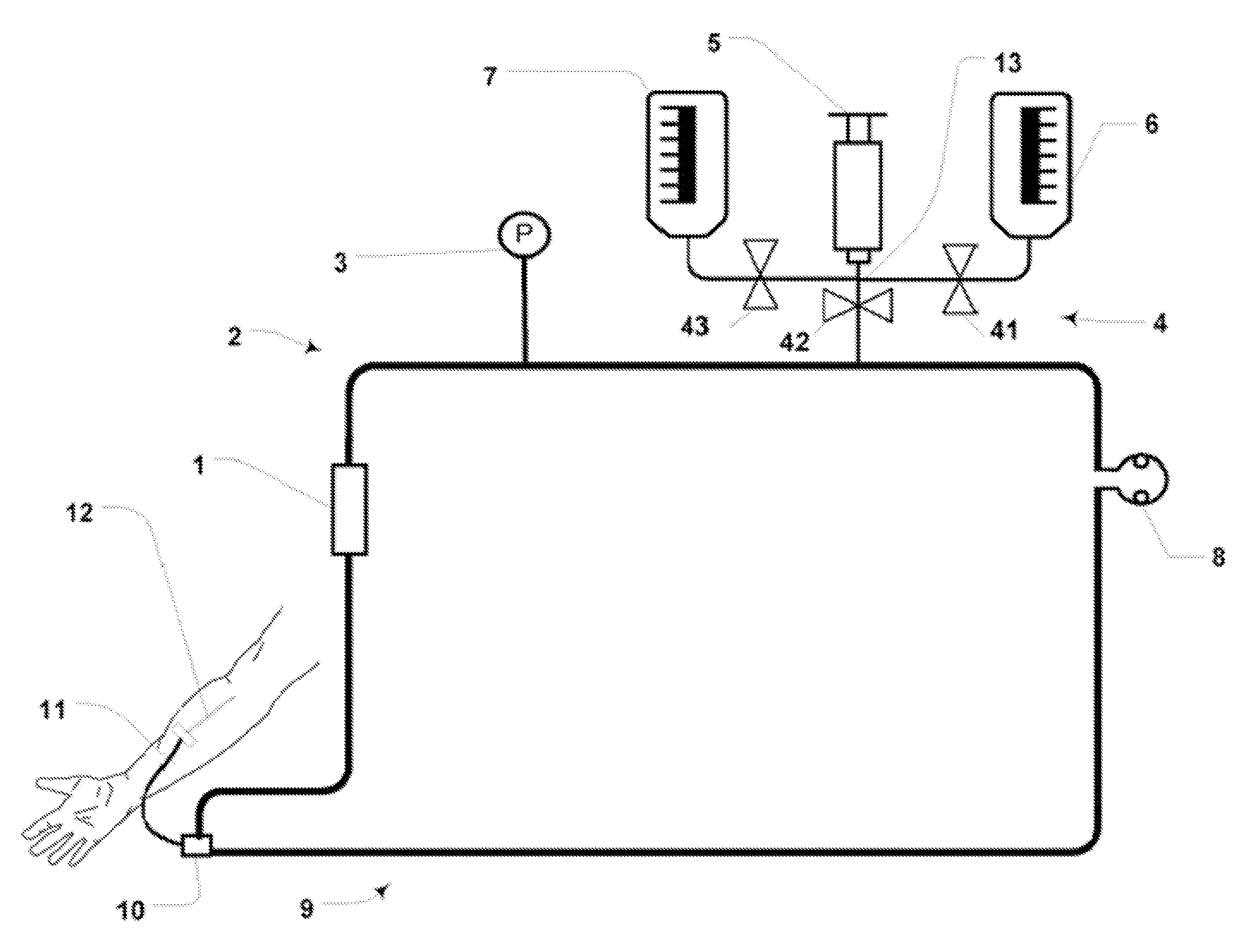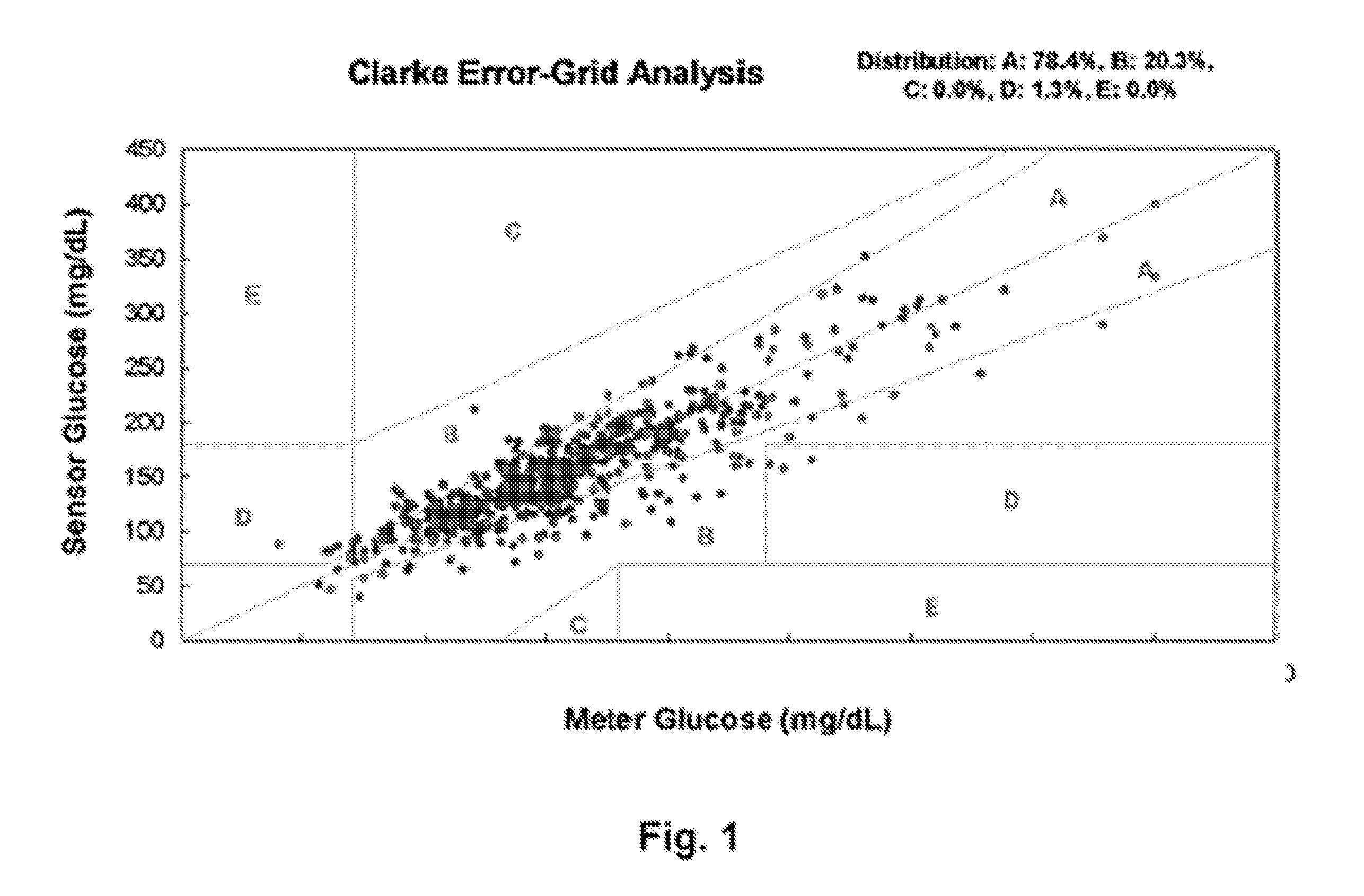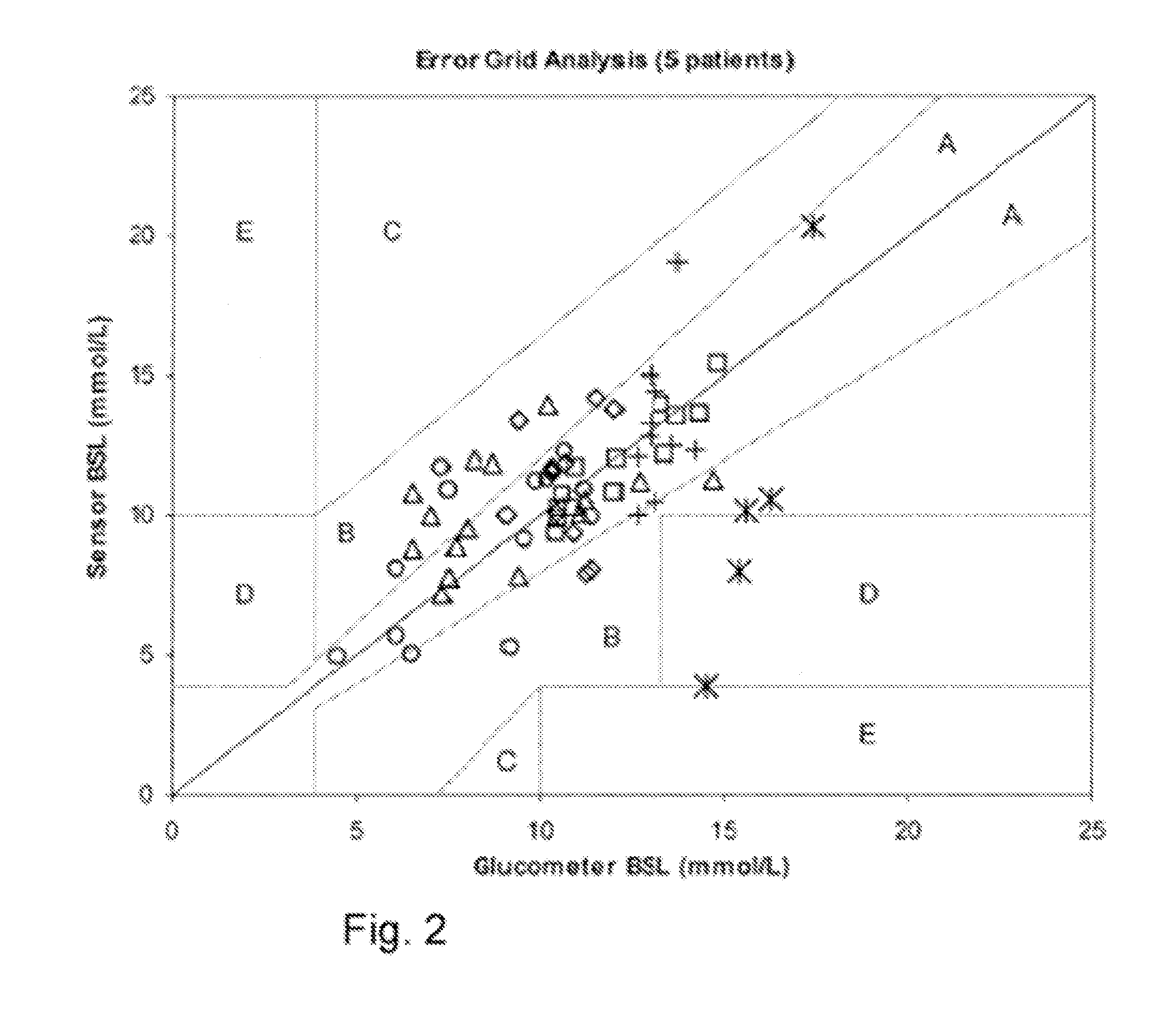Although hospitals are responding to the identified clinical need, adoption has been difficult with
current technology due to two principal reasons.
In addition, handheld meters require procedural steps that are often cited as a source of measurement error, further exacerbating the fear (and risk) of accidentally taking the blood glucose level too low.
Unfortunately, existing glucose monitoring technology is incompatible with the need to obtain frequent measurements.
High
measurement frequency requirements coupled with a labor-intensive and time-consuming test places significant strain on limited ICU
nursing resources that already struggle to meet
patient care needs.
Limitations of Finger-Stick Technology To implement TGC protocols using today's manual, finger-stick technologies requires many steps, is technique sensitive and has opportunities for user errors.
In a recent study published in the America College of Surgeons in 2006, Taylor et al. noted that while implementing a TGC protocol, errors were found in the implementation of the protocol in 47% of all patients.
Half of the errors were considered major, such as missing two or more glucose measurements in a row and
insulin dosing errors.
Even with all of this equipment and time spent, the targeted
glycemic range of 80-110 mg / dl is difficult to achieve and maintaining patients in this range is even more difficult.
Medication errors are a significant and growing problem that can result in tragic
loss of life and significant cost increases to the health-care
community.
Over 770,000 patients are injured because of medication errors every year.
Medication errors often arise from errors in
drug administration, which account for 38% of medication errors.
However, any error in the measurement, infusion determination, or infusion
system can lead to catastrophic medication errors, and so such systems have seen little use.
The performance of existing CGMS when placed in the tissue or an
extracorporeal blood circuit is limited.
When the
glucose measurement system is used in conditions where the concentration of
oxygen can be limited a condition of “
oxygen deficiency” can occur in the area of the enzymatic portion of the
system and results in an inaccurate determination of glucose concentration.
Further, such an
oxygen deficit contributed other performance related problems for the sensor
assembly, including diminished sensor responsiveness and undesirable
electrode sensitivity.
Intermittent inaccuracies can occur when the amount of oxygen present at the enzymatic sensor varies and creates conditions where the amount of oxygen can be
rate limiting.
This is particularly problematic when seeking the use the sensor technology on patients with cardiopulmonary compromise.
These patients are poorly perfused and may not have adequate
oxygenation.
Performance over time: in many conditions an electrochemical sensor shows drift and reduced sensitivity over time.
This alteration in performance is due to a multitude of issues which can include:
coating of the sensor membrane by
albumin and
fibrin, reduction in
enzyme efficiency, oxidation of the sensor and a variety of other issues that are not completely understood.
This process requires a separate, external measurement technique and is quite cumbersome to implement.
If this relationship does not exist, a
systematic error will be inherent in the sensor
signal with potentially serious consequences.
However, most of these investigations were performed under steady-state conditions only, meaning slow changes in blood glucose (<1 mg / dl / min).
In these conditions the resulting difference between interstitial glucose and blood glucose can become quite large.
The state in the application, the accuracy of the
sensing system is generally limited by the drift characteristics of the sensing element over time and the amount of
environmental noise introduced into the output of the sensing element.
For example, most strip based measurement technologies require an enzymatic reaction with blood and therefore have an operation incompatible with flowing blood.
Any operation that “opens” the system is a potential site of infection.
Given that the typical
target range for tight
glycemic control is between 80 and 120 mg / dl, a potential over-
estimation by 50 mg / dl can have serious consequences.
As an example, the patient might be given additional
insulin due to the inaccurately
high glucose measurement result.
Fingerstick measurements are generally considered undesirable due to the pain associated with the fingerstick process and the nuisance associated with procurement of a quality sample.
Sample procurement from central venous catheters can also present problems since current clinical protocols recommend the stoppage of all fluid infusions prior to the procurement of a sample.
Air bubbles represent a significant problem for hemodynamic monitoring systems as they change the overall performance of the system.
The presence of an
air bubble adds undesirable compliance to the system and tends to decrease the resonant frequency and increase the damping coefficient.
The resonant frequency typically falls faster than the damping increases, resulting in a very undesirable condition. FIG. 2 illustrates the effect of adding microliter air bubbles of various sizes to a
transducer-tubing system.
As more and more air is added to the system, the decrease in resonant frequency produces larger and larger errors in the systolic pressure, even though damping is increasing at the same time.
Air bubbles diminish, not enhance, the performance of
blood pressure monitoring systems.
Therefore, the process of procuring a blood sample has the potential to create bubbles within the fluid column.
Changers in
solubility due to temperature or pressure may result in bubble formation.
Changes in pressure can also result in bubbles.
This reduction in pressure creates an opportunity for bubble creation.
Therefore, the process of attaching or combining a hemodynamic
monitoring system with an automated blood measurement system creates the opportunity for bubble formation which in turn can result in poor performance of the hemodynamic
monitoring system.
Hemodynamic
pressure monitoring is unavailable during the procurement of the blood sample by either the
syringe method or by use of a blood sparing system.
In such a situation the withdrawal process creates a pressure gradient that will limit the accuracy of the existing hemodynamic
monitoring system.
Such sharing of a
single site can result in hemodynamic monitoring disruption during the blood procurement process.
For example, if the automated blood measurement system acquires a sample every 15 minutes, it will likely interfere with the hemodynamic pressure monitoring system so as to cause an alarm or produce inaccurate pressure measurements.
The management of such an alarm typically requires nurse intervention, defeating some of the advantages sought with an automated blood measurement system.
In addition to nuisance alarms, the real-time hemodynamic monitoring may be disrupted during the automated measurement process.
In those patients that are hemodynamically unstable, such a disruption may be an unacceptable consequence of automated
blood glucose monitoring.
Although such self-monitoring of blood glucose has been an indispensable tool for
diabetes therapy, it is fraught with difficulties.
Frequent finger pricking is painful, costly, and inconvenient for the patient.
As a result of this invasiveness, many diabetics frequently skip self-monitoring tests.
Further, tight control of blood glucose is difficult to achieve without frequent glucose measurements.
Glucose fluctuations during the day, and particularly during the night, are often missed using self-monitoring techniques.
Unfortunately, water and other non-glucose metabolites, such as proteins, amino acids,
urea, fatty acids, and triglycerides also strongly absorb in the MIR.
Calibration techniques that infuse excessive amounts of glucose into a patient can be undesirable (since maintenance of tight glycemic control is important in many medical settings, including OR and ICU settings).
Prediction errors requiring continued bias and slope corrections indicate drift in reference method or changes in the character of the samples,
sample handling, sample presentation, instrument response function, or
wavelength stability.
Additional
dilution can occur due to tubing discontinuities.
However peristaltic pumps can be prone to pump volume differences between tubing sets and within a
tubing set over time.
This vacuum can cause the tubing to collapse, and the captured volume between the occluding rollers will be less than in non-collapsed tubing.
However, over time the tubing can fatigue so that it collapses more easily and the capture volume drifts down.
As a result, the accuracy of the pump decreases over time.
Volume determination helps to compensate for pump efficiency changes but does not completely compensate for blood changes.
Additionally, such flow meters are expensive relative to overall system cost objectives.
Due to the possibility of changing parameters associated with the blood being withdrawn, the physical volume of the blood access system and the efficiency of the pump system, the use of a fixed draw volume or draw time is inadequate.
The result is a sample that provides an erroneous result, either due to simple
dilution (in the case where the infusion fluid is simple
saline) or due to a false change in the
analyte or parameter of interest due to the
contamination of the sample by the constituents of the infusion fluid.
Errors of this type that are associated with sample procurement prior to
analyte or parameter determination are known in the clinical
community as pre-analytical errors, and are among the most common errors encountered in measurements of
blood chemistry and other
biological fluid samples.
Such errors can result in the need to repeat tests, causing delays in making medical decisions or administering treatment.
In some cases, such errors can lead to erroneous medical decisions, leading to serious and sometimes even fatal medical consequences for the patient.
In addition to
dilution or
contamination of a blood sample by infusion fluid due to insufficient volume of pre-sample, there are several other situations that can compromise the quality of the biological sample.
This can cause acquisition of a non-representative sample if the blood sample were drawn before the fluid were evenly distributed and equilibrated throughout the
systemic blood volume.
Acquisition of a sample during administration of a fluid or agent can be contaminated with the co-infused substance.
As before, a blood sample drawn during such therapy can be an unstable or nonrepresentative sample.
These manual methods were extremely labor intensive and are not feasible for therapy adoption.
Diabetes companies are currently focused on implementing
closed loop control for
ambulatory diabetic patients where they have encountered a myriad of problems associated with blood glucose sensor accuracy and glucose level control due to the large fluctuations
in patient metabolism and eating patterns, changes in sensor sensitivity due to the elapse of time and differences in patients, safety detection systems etc.
Some glucose sensor manufacturers have focused on subcutaneous implanted sensors to avoid the pitfalls of sensor degradation due to
fouling and clotting but these devices, while avoiding the need for blood contact, suffer from longer time constants and transport delays that make
closed loop control very difficult.
Non-invasive optical methods using near-
infrared spectroscopy suffer from the affects of tissue variation and some manufacturers require the use of individual patient calibration making their use less desirable.
No glucose has yet been proven to meet these requirements.
This imposes a very large burden upon the sensor design which is currently one the biggest limitation in developing a viable implanted system.
If the calibration of such a sensor were to fail it could have deleterious consequences for the patients.
 Login to View More
Login to View More  Login to View More
Login to View More 


